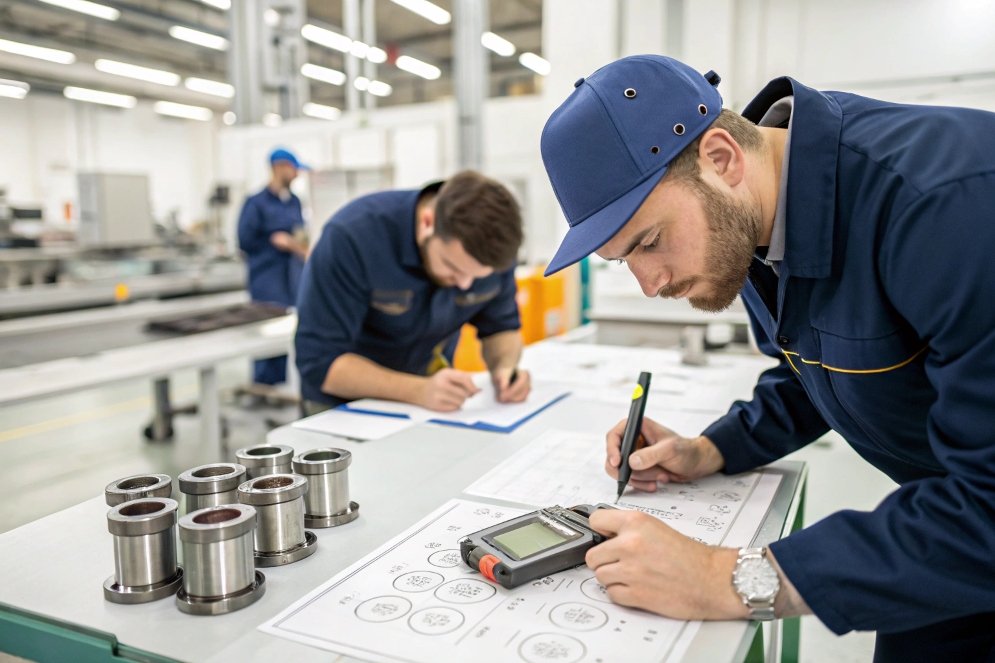
Monitoring and controlling the custom manufacturing process1 is crucial for ensuring that parts meet your specifications and quality standards. As someone involved in sourcing custom parts, I’ve learned that without proper tracking, the risk of issues like delays or defects increases. In this article, I’ll explain how you can effectively monitor the manufacturing process, tools to help track progress, and why real-time monitoring2 is key to keeping everything on track.
Monitoring the custom manufacturing process is essential to ensure that parts are produced according to the correct specifications and quality standards. Using the right tools and real-time monitoring can prevent issues before they affect the end product.
Staying on top of the manufacturing process allows you to catch potential issues early, which helps avoid costly mistakes later on. Let’s dive into how to monitor and control the process effectively to ensure that your custom parts are delivered on time and meet your expectations.
What Tools Can Help You Track the Progress of Custom Manufacturing?

There are several tools available to help you track the progress of custom manufacturing. These tools not only keep you informed about the status of your order but also allow you to address issues as they arise, making sure everything stays on schedule.
Key Tools for Monitoring the Custom Manufacturing Process
| Tool | Purpose |
|---|---|
| Project Management Software3 | Helps track deadlines, manage tasks, and allocate resources for efficient workflow. |
| ERP Systems (Enterprise Resource Planning) | Integrates all stages of production, allowing for real-time tracking of inventory, orders, and production timelines. |
| Production Monitoring Software | Tracks progress in real-time, including key metrics like production speed, quality control, and resource usage. |
Why These Tools Matter
From my experience, using a project management tool like Asana or Trello can help keep your team aligned on timelines, tasks, and progress updates. In addition, an ERP system connects all areas of production—from raw materials to finished products—so you can monitor everything in one place. We once had a delay because production scheduling wasn’t aligned with delivery dates. By using better project management tools, we were able to avoid similar issues in future projects.
How Can You Ensure that Manufacturing Processes Are Aligned with Specifications?

To ensure that manufacturing processes align with your specifications, it’s essential to have clear communication with your supplier, conduct regular quality checks, and use standardized procedures. Consistency and attention to detail in the process are key to meeting your requirements.
Best Practices for Ensuring Alignment with Specifications
| Best Practice | Explanation |
|---|---|
| Provide Detailed Drawings | Always share clear, detailed specifications and drawings with your supplier to avoid misunderstandings. |
| Conduct Regular Quality Inspections | Schedule inspections at critical stages of production to verify that parts meet the required specifications. |
| Establish Clear Communication | Ensure that all parties, from suppliers to manufacturers, are in constant communication throughout production. |
Why These Practices Matter
When we order custom parts, I ensure that the technical drawings are as clear and detailed as possible. This prevents mistakes related to design misinterpretations. Additionally, we conduct regular quality checks at key production stages, such as before parts move from one production phase to another. This allows us to verify that the parts align with specifications before final assembly, helping us avoid costly rework or production delays.
Why Should You Use Real-Time Monitoring to Control the Custom Manufacturing Process?
Real-time monitoring allows you to stay on top of the production process at every stage, from material procurement to the final product. This approach can drastically reduce risks associated with delays, quality issues, and supply chain disruptions.
Advantages of Real-Time Monitoring
| Advantage | Explanation |
|---|---|
| Quick Identification of Issues | Real-time data allows you to identify problems as they occur, so you can act immediately. |
| Improved Communication | Real-time updates allow you to communicate with your suppliers and manufacturing team effectively. |
| Faster Decision-Making | With up-to-the-minute data, you can make informed decisions quickly, avoiding delays and reducing risks. |
How Real-Time Monitoring Improves Control
From my experience, using real-time monitoring tools like IoT sensors on production lines has been invaluable. For instance, during one project, we noticed a machine was running slower than expected. The system alerted us immediately, and we were able to adjust the process before it affected production. Without real-time monitoring, we might have only realized the issue too late, leading to delays or poor-quality parts.
Conclusion
Monitoring and controlling the custom manufacturing process is essential to ensure that parts are produced according to your specifications and quality standards. By using project management software, ERP systems, and real-time monitoring tools, you can stay on top of the production process and identify potential issues early. Regular quality inspections and clear communication with your supplier will also help ensure that everything stays on track. With the right systems in place, you can ensure smooth, efficient custom manufacturing that meets your expectations.
Understanding the custom manufacturing process is vital for ensuring quality and efficiency. Explore this link to learn more about best practices. ↩
Real-time monitoring can significantly enhance production efficiency and quality control. Discover its benefits through this resource. ↩
Choosing the right project management software can streamline your manufacturing process. Check out this link for top recommendations. ↩

